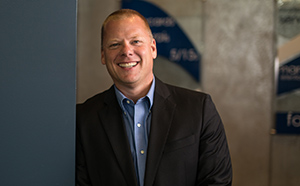Some of the healthiest marriages I’ve observed are ironically partnerships of two people who have learned not just to fight, but how to fight well.
Each accepts that the other brings a unique personality and perspective to the table. And each understands that the partnership is stronger when each focuses on the other’s strengths and not on their weaknesses. Both learn that a strong partnership is a result of open and honest communication, and the goal is personal and professional growth.
[mks_pullquote align=”left” width=”300″ size=”18″ bg_color=”#00acc6″ txt_color=”#ffffff”]As with marriage, many make the incorrect assumption that the best teams are conflict free. They often equate conflict with dysfunction.[/mks_pullquote]
As with marriage, many make the incorrect assumption that the best teams are conflict free. They often equate conflict with dysfunction. It’s an assumption that can lead to misaligned expectations (for others and for oneself), hurt feelings that turn into wounds, resentment and mediocrity.
Conflict in teams is beneficial when it:
- Helps to break down perceived barriers of politics or etiquette that prevent open communication and the exchange of great ideas. Again, a leader should intentionally give the entire team permission to debate freely and respectfully, ensures that hard feelings are left in the room and everyone is aligned and committed when they walk out the door.
- Gets to the heart of the issue. The most common dysfunction of a team facing a conflict is avoidance. Teams cannot solve problems if their cultural reaction is to avoid them. They also can’t solve them if their cultural reaction is to evade them. That’s when individuals walk over to the water cooler or copy machine to discuss the problem on their own, sometimes sarcastically and sometimes worriedly. Cliques are formed and work begins to get done in silos when people evade one another.
- Crowd-sources the best ideas and filters out the weakest.
- Causes individuals to defend their position so that they’re sure they’re standing on solid footing.
- Promotes competition. And competition pushes us beyond our perceived thresholds and causes us to bring our best “game.”
Initially, even healthy conflict is uncomfortable. And it can be particularly unnerving in the workplace unless a safe environment is created. Often that safe environment is created by a leader who pulls teams together to lay out the ground rules and give permission for people to disagree:
“I expect to hear differing views on this from each present, and, I don’t simply want to hear what you think is right but particularly about what you think is weak or wrong.”
Most will not engage at the level that they need to unless given permission to do so. It’s different in the workplace. From there, a leader alters his role; sometimes mining for conflict (often by surveying faces for disagreeable expressions while others are speaking) and will become an instigator when necessary. At other times they will adopt the role of referee by ensuring everyone is playing by the rules and is maintaing a safe environment.
As is often the case, the key to fighting well is fair and effective communication. Team leaders must clearly articulate that conflict is an expected, natural and necessary part of group interaction. And they must reinforce that expectation (including the “why” behind it) often. Doing so provides permission for those who have ideas and want to contribute, and for others it helps to minimize initial (and natural) feelings of rejection.
After being given the necessary permission, it doesn’t take long before team members are comfortable expressing their opinions, challenging assumptions and building on each others ideas. They become energized, they feel closer as a team (conflict has a way of strengthening relationships), and they begin to produce exceptional results.
The true challenge for a leader is to shift the paradigm that says all conflict is bad and make others feel safe to debate and challenge one another freely.
Just as in marriage, when conflict is perceived as a dysfunction, it results in hurt feelings, resentment, anger, division, name calling and ultimately each person feels like they’re spinning their wheels and not going much of anywhere. When conflict is viewed as a healthy and natural part of the relationship, done in a safe environment and played by the rules, it can produce exceptional results.
The honeymoon stage of life can be like-so-cute but quite short. The words that we use, like “yes, my love” and “I was totally thinking the exact same thing at the exact same moment, we were totally made for each other,” eventually give way to conflict. And that’s ok… if we learn to fight well.
Fighting well means contributing to the conversation through open and honest communication with grace and care. It also means receiving others contributions with respect and grace. And the most critical element is that we focus on the issue and not the person. When conflict becomes personal, everyone loses.
Remember, none of us are as strong as all of us.

